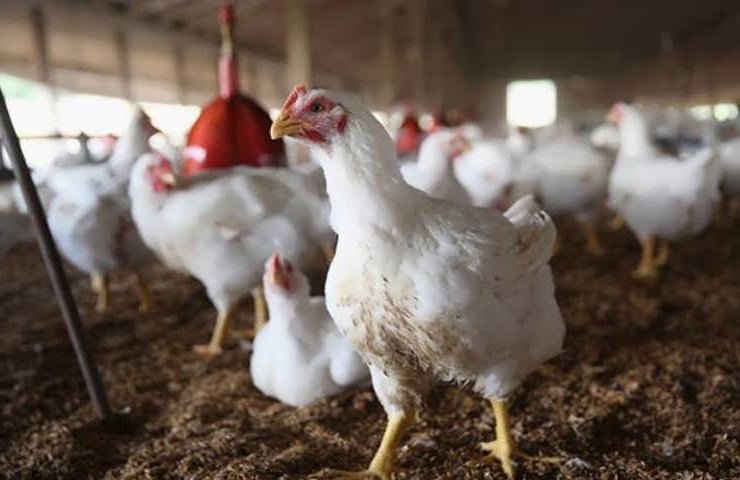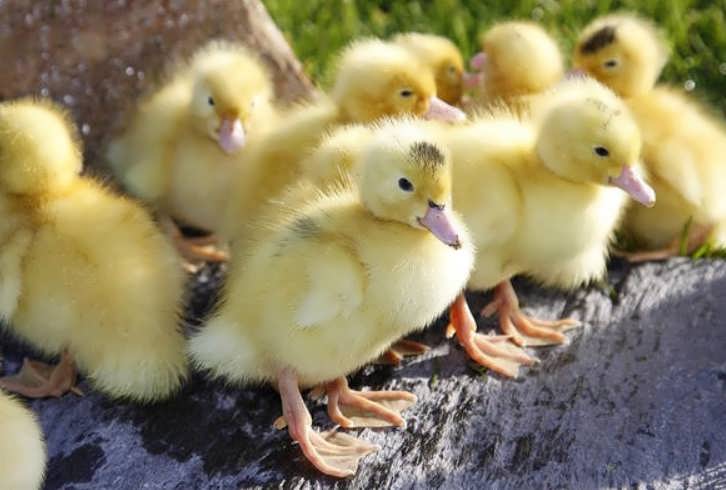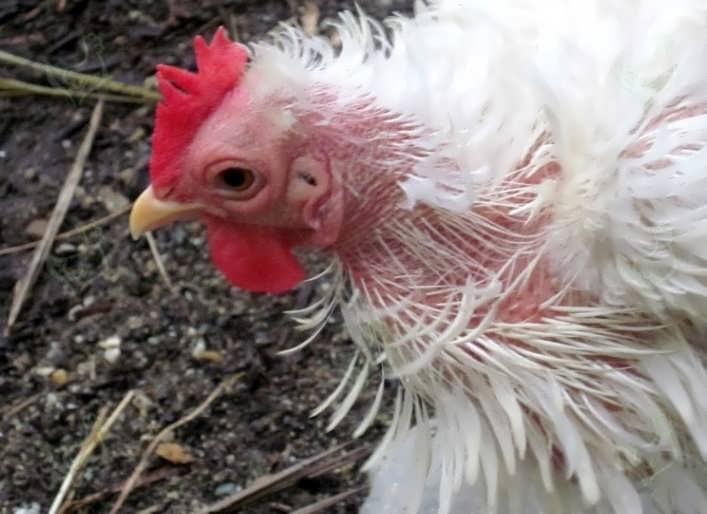When buying young hens on the market or hatching chickens on your own in an incubator, the most important question that the poultry farmer is interested in is when the hens will start laying. I will tell you, dear readers, when you can expect the first eggs from pullets, and how to achieve good productivity from nurses.
- When laying hens begin to lay
- How often do chickens lay
- How many years do chickens lay
- What time of day are they rushing
- How to get chickens to lay eggs every day
- What to feed chickens so that they rush every day
- Questions and answers
- Do broiler hens lay?
- Which hens lay better, white or red?
- Can a hen lay eggs without a rooster?
- Chickens lay badly in the summer, what should I do?
When laying hens begin to lay
The age of onset of egg laying in a domestic chicken depends on its breed and conditions of detention. There are breeds of meat, meat, egg, as well as hybrids bred for large poultry farms.
The earliest maturing pullets belong to the egg breeds and crosses, bred on the basis of the Leghorn - the most egg-laying breed in the world. Leggorn hens begin to rush at 4-4.5 months, if all conditions for growing birds are met. At the same age, females of the Rhodonite, Dominant, Hisex and Lohmann Brown crosses begin laying eggs. Domestic and imported egg breeds are not inferior to crosses in precocity: Moscow black, Russian white, Minorca.
Meat-egg breeds, which are characterized by large size and unpretentiousness, begin to lay at the age of 6-6.5 months. And meat varieties even later - after 7 months.
I want to draw the reader's attention to the fact that the indicated age of the onset of oviposition is true only if the livestock is kept in comfortable conditions:
- ambient temperature is +18 +25 degrees;
- length of daylight hours 12-15 hours;
- the feed contains the necessary nutrients, vitamins and minerals;
- the bird is not stressed.
How often do chickens lay
Egg breeds and crosses are capable of laying daily, taking only a short break for molting. The record belongs to the Leghorn hen, which laid 360 eggs in a year. Modern crosses are designed for a productivity of 300-320 pieces.
Meat-egging breeds, such as Kuchinsky Yubileiny, Adler, Leningrad, Amroks, lay about 200 eggs a year. Usually the female lays eggs for 3-4 days in a row, then rests for a day. In autumn and spring, at the time of molting, pets take a break in oviposition for a week and a half.
How many years do chickens lay
A hen can live and lay eggs for up to 10-12 years . The record here again belongs to the Leggorns - in one farm, a chicken lived and laid eggs for 20 years!
Maximum productivity in domestic chicken is observed at 1-2 years of age , then it gradually reduces egg production. In large farms where gross egg production is important, layers are culled after the first or second year of the laying season. In a small household farm, chickens can be left up to 3-4 years old, observing the laying and culling of bad individuals.
The egg in the body of a chicken matures within 24 hours, sometimes longer. Therefore, the laying hen is carried only once a day.
What time of day are they rushing
As a rule, chickens lay eggs in the first half of the day, from 8 am to 2 pm This is due to physiology, the egg matures more intensively in the body of the female at night, when she is resting.
How to get chickens to lay eggs every day
If the genetic potential (breed) allows, create comfortable conditions for the livestock, and the pets will be pleased with large and tasty eggs every day. Shortly before the start of egg-laying, transfer young individuals to an “adult” mode of life, having previously examined and evaluated each bird. Nice one looks like this:
- weighs at least 70% of the mass of an adult chicken (for example, if an adult Rhodonite cross weighs 2.5 kg, then a youngster at 4.5 months should have a mass of 1600-1800 g);
- has a developed strong body, with a straight keel and a flat back;
- widely spaced legs (legs "X" - a rough marriage);
- scallop beginning to blush.
Be sure to inspect the young for any parasites (lice, ticks, fleas). If bald patches are visible on the skin and insects are visible, the pullets are treated with pyrethrum powder or Bars drops.
Urgently clean the chicken coop, wash the walls and whitewash with lime. To prevent the appearance of parasites, I advise you to spread fresh wormwood, tansy in the room. The smell of these herbs repels parasites and cleans the air in the room.
Inside the laying shed, install perches and nests, arrange feeders (so that all individuals can freely approach the food) and drinkers.
Nest boxes, measuring 40 by 50 cm, put on the floor or hang on the wall in a dark and secluded corner. 3-5 hens can lay in one nest, that is, 3 nest boxes will be required for a dozen laying hens. At the bottom of the nest, put fresh hay or soft straw, large shavings (small sawdust is not suitable, there is a lot of dust from them). The bedding needs to be changed periodically.
It is necessary to equip the chickens with walking. If the terrain allows: there are no stray dogs and birds of prey, cars do not drive and free-roaming laying hens do not spoil the planting in the garden, let them roam freely. The chicken will not go far from home, she will graze nearby, eating grass and looking for insects.
If you can not give the layers complete freedom, build a fenced paddock. Its dimensions are determined by the size of the plot, for 10 birds it must be at least 6 square meters. m. To protect against predators and cats, and to create a lace shade, pull a camouflage net on top.
Keeping the livestock in a confined space, you will have to provide it with fresh grass, because the chickens themselves will not be able to get vegetation.
What to feed chickens so that they rush every day
You can go the simplest way and buy chickens complete feed (PK-1-1 and PK-1-3). Such food will fully provide protein, vitamins and minerals. Compound feed consists of granules of medium and small size, give it in a dry form, without steaming or filling it with water. Do not add any additional additives to such food, it will only cause harm. Additionally, chickens can be given only a little greenery.
Feeding with compound feed also has disadvantages:
- short shelf life (no more than 3 months);
- high price (from 30-40 rubles per 1 kg);
- the taste of a homemade chicken egg will not differ from the taste of a store-bought egg.
If you want to abandon industrial compound feed, but keep the productivity of the livestock at a high level, make compound feed yourself. It will take time and some effort, but the result is worth it.
In order for chickens to lay well, the protein content in the feed should not be lower than 17%, which is ensured by the introduction of cake, fishmeal into the feed. The basis of the feed mixture is crushed or flattened grain of wheat, barley, corn, in a ratio of 1:0.5:1. Add to this mixture:
- 10% wheat bran;
- 8% sunflower cake;
- 4% fish or meat and bone meal;
- 0.5% table salt.
Shell rock or chalk is added to the finished mixture, in the amount of 2% of the total feed mass, and a premix (Zdravur, Ryabushka). The premix contains a complex of vitamins, it is especially necessary in winter, when the herd sits indoors.
The norm for giving a grain mixture with all additives per chicken is 120-150 g per day . Do not exceed this rate so that the laying hen does not get fat. Feed can be given to chickens in the form of wet crumbly mash, with the addition of food waste, dairy products, vegetables.
Laying hens are fed at home twice a day.
Questions and answers
Here, dear readers, I will answer the most common questions from beginner poultry farmers.
Do broiler hens lay?
Yes, broiler hens are able to rush, like ordinary laying hens. They lay eggs weighing up to 85 grams, but they cannot boast of good egg production. The maximum broiler bird lays 80-100 pieces per year, consuming feed 2-3 times more than a regular hen.
Which hens lay better, white or red?
Leghorn genes - the most egg-laying hens - are present in every egg hybrid. In addition to productive qualities, Leggorns also transmit their light color. Crosses with brown feathers carry the genes of meat breeds responsible for the mass of the bird, yielding slightly in the number of eggs laid. This difference is insignificant, it is no more than 30 pieces per year.
Can a hen lay eggs without a rooster?
Maybe. The egg matures in the body of the female, regardless of whether the male tramples it. Without a rooster, hens rush no worse than with a rooster, but chickens will not hatch from such a masonry.
Chickens lay badly in the summer, what should I do?
The reason for the cessation of egg laying in summer may lie in the high air temperature. If the temperature outside is above +28 degrees, chickens lay fewer eggs, as they suffer from heat in the same way as people.
To help the hens cope with the heat, equip the aviary with shade, spray the walls and floor in the hen house with cold water several times a day.








